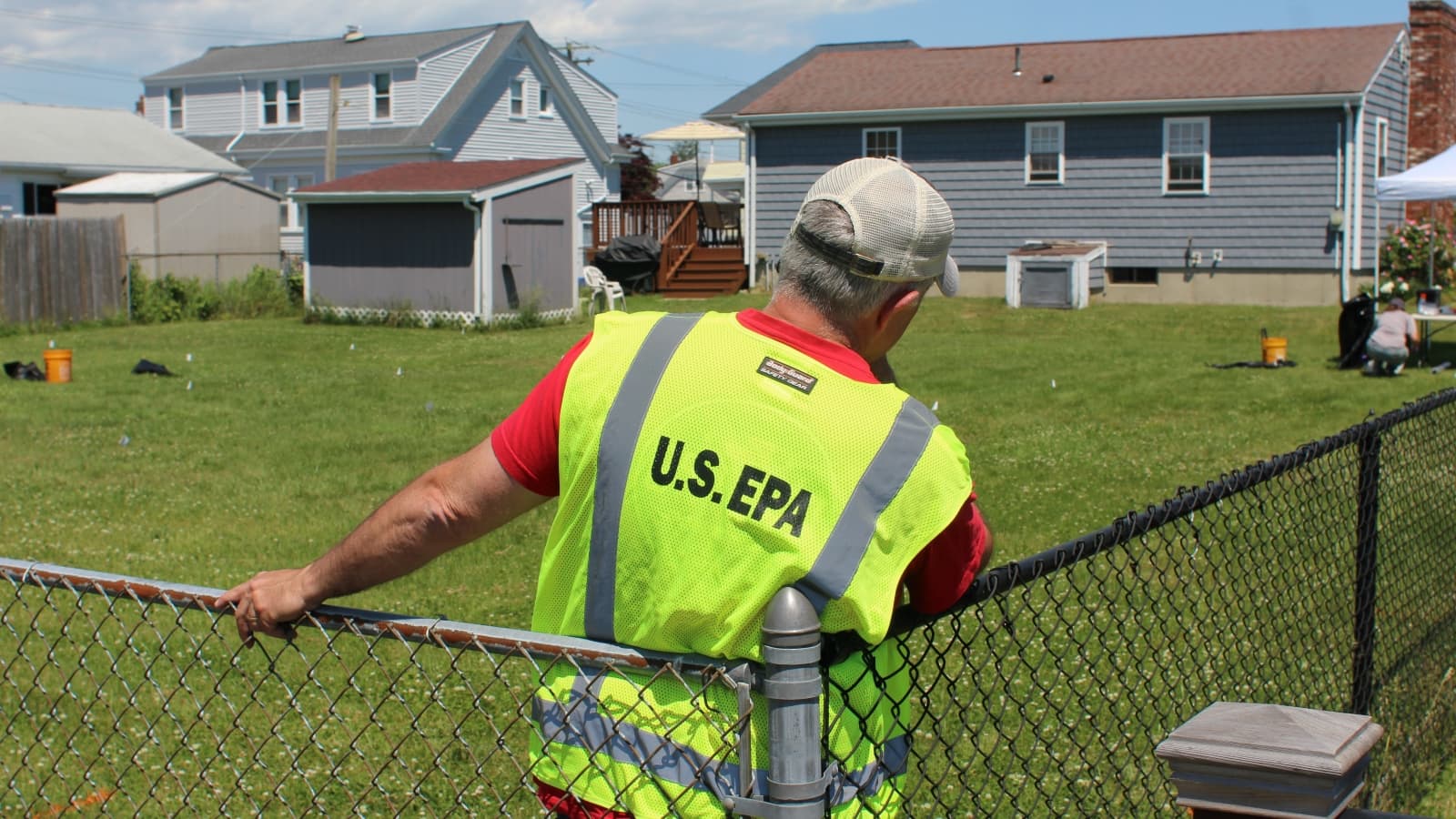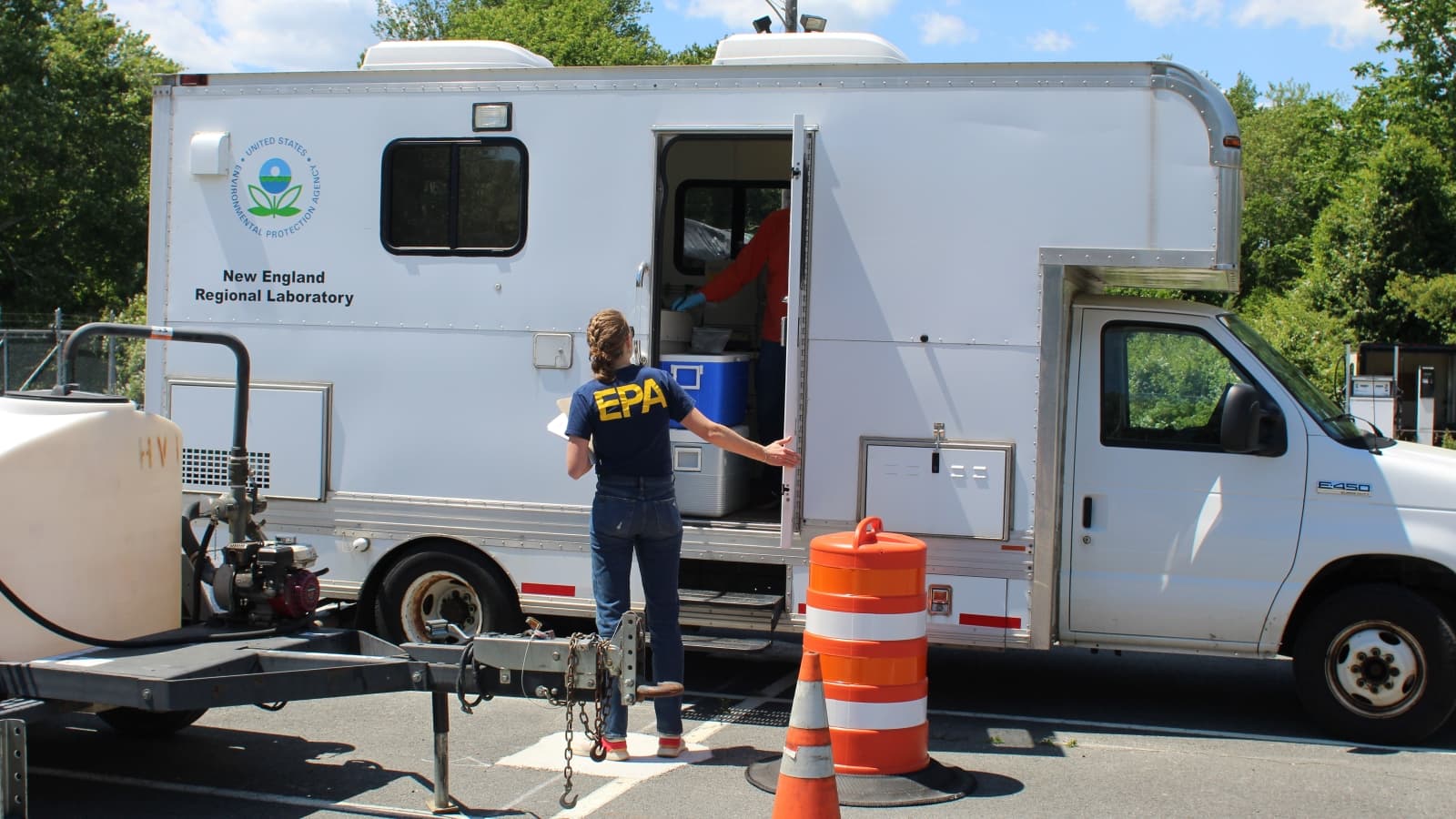Advertisement
The trouble under Bliss Corner: EPA begins removing lead, toxic chemicals

Bliss Corner looks like a typical postwar suburb, but beneath the neighborhood’s ranch houses and manicured lawns is a pollution problem that went undetected for more than half a century.
This week, the U.S. Environmental Protection Agency began removing soil with high concentrations of lead and polychlorinated biphenyls, or PCBs, from the five most contaminated homes in the neighborhood. Bliss Corner straddles the boundary between New Bedford, a historic industrial city, and Dartmouth, the city’s largest suburb.
Average lead concentrations in the soil of at least 20 different residential properties scattered throughout the neighborhood exceed federal safety standards, and a soil core recently taken from the grounds of a Bliss Corner preschool contained a concentration of PCBs 400 times higher than the state’s safety standard for residential areas.
Kelsey Dumville, a community liaison for the EPA, said the people most vulnerable to exposure are young children who grew up playing in contaminated soil, or adults who have eaten produce grown in the neighborhood on a regular basis over several decades.
Long-term exposure to PCBs, a man-made chemical the EPA banned the production of in 1979, may cause cancer and impede the development of neural and reproductive systems. The effects of lead, the more prevalent of the two contaminants in Bliss Corner, can harm people’s brains and neural systems if breathed or ingested in high enough doses.
Dumville said there are no documented cases yet of people suffering health problems from direct exposures to the pollution the EPA is remediating in Bliss Corner. Generally, however, it can be difficult to isolate cases when people might be exposed to other carcinogens and neurotoxins through their work, their previous residences or their lifestyle choices.
As the EPA cleanup gets underway, another big question still looming over Bliss Corner is how the contamination arrived in the neighborhood in the first place.

Dumville said developers likely used contaminated material to fill low-lying areas as they transformed the once-rural landscape of Bliss Corner into a suburb during the 1940s, ‘50s and ‘60s.
“We believe, based on our records and doing an investigation, that there was probably some fill brought from the Town of Dartmouth and potentially the City of New Bedford,” Dumville said.
Records from the 1950s and early ‘60s obtained by a local newspaper, Dartmouth Week, show Dartmouth officials permitted the City of New Bedford to dump waste onto private properties in Bliss Corner where owners had requested fill material. Historic maps of Bliss Corner show parts of the neighborhood were covered in streams and wetlands prior to the neighborood’s redevelopment.
The EPA is still investigating which parties will ultimately be responsible for paying for the cleanup. Officials in Dartmouth and New Bedford alike have written letters to the EPA denying that their municipal governments should be held fiscally responsible.
The cleanup is expected to cost around $3 million, though parties deemed responsible for the contamination could end up paying larger settlements. It’s also possible that the cleanup could expand beyond the five properties the EPA plans to remediate this summer.
Betty Ussach-Schwartz, a lawyer and longtime activist in Dartmouth, said she is concerned regulators have not yet surveyed a large enough area to determine the true extent of environmental pollution in the neighborhood. An EPA action memorandum summarizing the scope of the cleanup stated that all 70 properties surveyed for lead and PCBs were located on the Dartmouth side of Bliss Corner. Ussach-Schwartz said there may have been nearby properties in New Bedford that were filled with the same contaminated material.
In particular, Ussach-Schwartz said testing should be conducted at a public housing development located directly across Rockdale Avenue from the area of Dartmouth that regulators recently surveyed. Blue Meadows, a complex of nearly 200 units for low-income families managed by the New Bedford Housing Authority, opened in 1951, around the same time crews were allegedly dumping contaminated fill in nearby wetlands and low-lying areas to facilitate residential development.
The EPA did not immediately respond to questions on Tuesday about the scope of the area regulators tested.
“I believe that there are many more than five properties that have to be addressed, and as time goes by, it’s easily forgotten,” Ussach-Schwartz said. “I don't know that these people have a voice to represent them.”
EPA crews began remediation work in the backyard of a single-family home in Dartmouth on Monday. The agency expects to finish a targeted cleanup of the neighborhood’s most polluted residential properties before the end of September.
This story is a production of New England News Collaborative. It was originally published by The Public's Radio (RIPR).